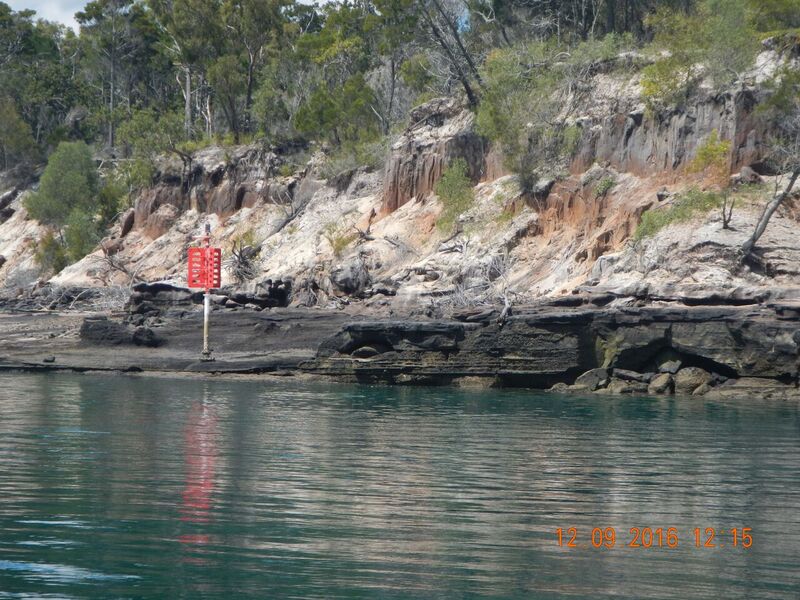|
|
Intertidal low energy over intermediate substrateShort descriptionIntertidal low wave energy over substrate of intermediate consolidation, such as coffee rock or beach rock. Disclaimer: Ecosystem type descriptions are based on biophysical attributes identified in Central Queensland through expert advice and supported by scientific literature. Not all ecosystem types are mapped based on current inventory, and many of the ecosystems described here may also occur in other parts of Queensland.
Classification categoriesSelect from the links below to view related ecosystem type categories Long descriptionIntertidal low to very low wave energy over either:
These ecosystems are less dynamic than high energy intermediate ecosystems in terms of exposure and burial. Energy is typically low to very low, however these ecosystems can be periodically exposed and buried by sand deposition associated with wave action (e.g. storm events, cyclones) or current action (e.g. tidal flow or riverine flow following heavy rainfall, which can both undercut cliffs). Coffee rock is a soft, dark-brown coloured friable rock consisting of sand grains weakly cemented together by organic matter (mostly plant-based). Coffee rock formed when humic acids from decaying plant matter are washed down through sandy soils, meeting shallow aluminium-rich groundwater where it precipitates to form an indurated sand layer in the B horizon of podzol soils. These occur on quartz sand systems in the sub-tropics and tropics[1]. On low energy shorelines they may have become exposed by riverine action against the sandy dune escarpment, outcropping on shorelines and in the shallow subtidal area. Freshwater flows and riverine currents can break up the soft rock into boulders by undercutting the cliff face with coffee rock blocks dropping or sliding off the cliff face[4]. As it forms a hardened layer, coffee rock can be associated with groundwater discharge via freshwater seepage or springs draining through the sand dunes and then flowing sideways where it meets the low permeability rock (see Coastal sand masses (high dunes) conceptual model). There is seldom any habitat forming biota but green algae such as Ulva sp. and other freshwater tolerant filamentous algae will grow in pools in the coffee rock, and crabs occupy the crevices between the rock (Moyra McRae pers. comm.). Special valuesFishing hot spots on ledges, often nestled beneath unvegetated sand cliffs or associated with an estuary entrance (exposed by an erosional process). Shorebird feeding habitat for resident species such as the beach stone curlew and sooty oyster catcher[2]. Diagnostic attributesInundation 'Intertidal – Lower low', 'Intertidal – Mid low', 'Intertidal – Upper low', 'Intertidal – Low undifferentiated', 'Intertidal – Lower medium', 'Intertidal – Upper-medium', 'Intertidal – Medium undifferentiated', 'Intertidal – High', 'Intertidal – Undifferentiated', 'Intertidal – High undifferentiated' Consolidation 'Intermediate' Energy magnitude (wave) 'Low', 'Very low' QualifiersThe Naturalness qualifier is relevant. Coffee rock is very soft and it is possible to scrape the surface or cut and remove it. Coffee rock is commonly encountered during beach driving where it becomes an obstacle to drivers, who in some instances have cut through coffee rock to gain beach access (e.g. historically on Ngkala Rocks, K’gari (Fraser Island)). Coffee rocks can be damaged by vandalism or graffiti. The period and trend qualifiers are also relevant as it can be alternately exposed and buried by sand (Moyra McRae pers. comm.). Shellgrit, coral rubble and other carbonate gravel adjacent to beach rock can be harvested, which can potentially change the chemistry of these areas. DistributionCoffee rock can be found up and down the Queensland coastline as a result of coastal processes and sea level change, in association with coastal sand masses. Beach rock can be found on carbonate rich beaches, such as coral-dominated ecosystems (e.g. fringing and platform reefs) and shelly intertidal areas. The following relates to distribution of this ecosystem type within the Central Queensland mapping area:
CommentsOther relevant attributes could include Substrate composition, Energy source, Energy magnitude and Lithology. The Terrain roughness and Terrain morphology are indicative of crevices and other spaces as potential habitat for macroalgae and other biota. Additional Information
References
Last updated: 11 July 2019 This page should be cited as: Department of Environment, Science and Innovation, Queensland (2019) Intertidal low energy over intermediate substrate, WetlandInfo website, accessed 8 May 2025. Available at: https://wetlandinfo.des.qld.gov.au/wetlands/ecology/aquatic-ecosystems-natural/estuarine-marine/descriptions/26/ |

 — Department of the Environment, Tourism, Science and Innovation
— Department of the Environment, Tourism, Science and Innovation


